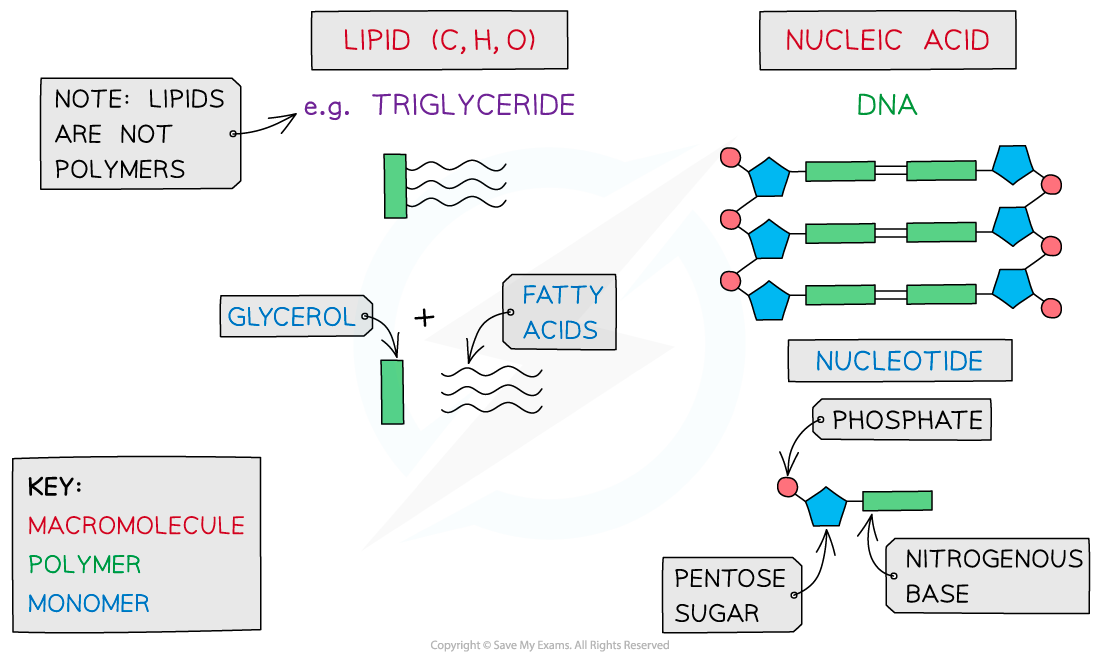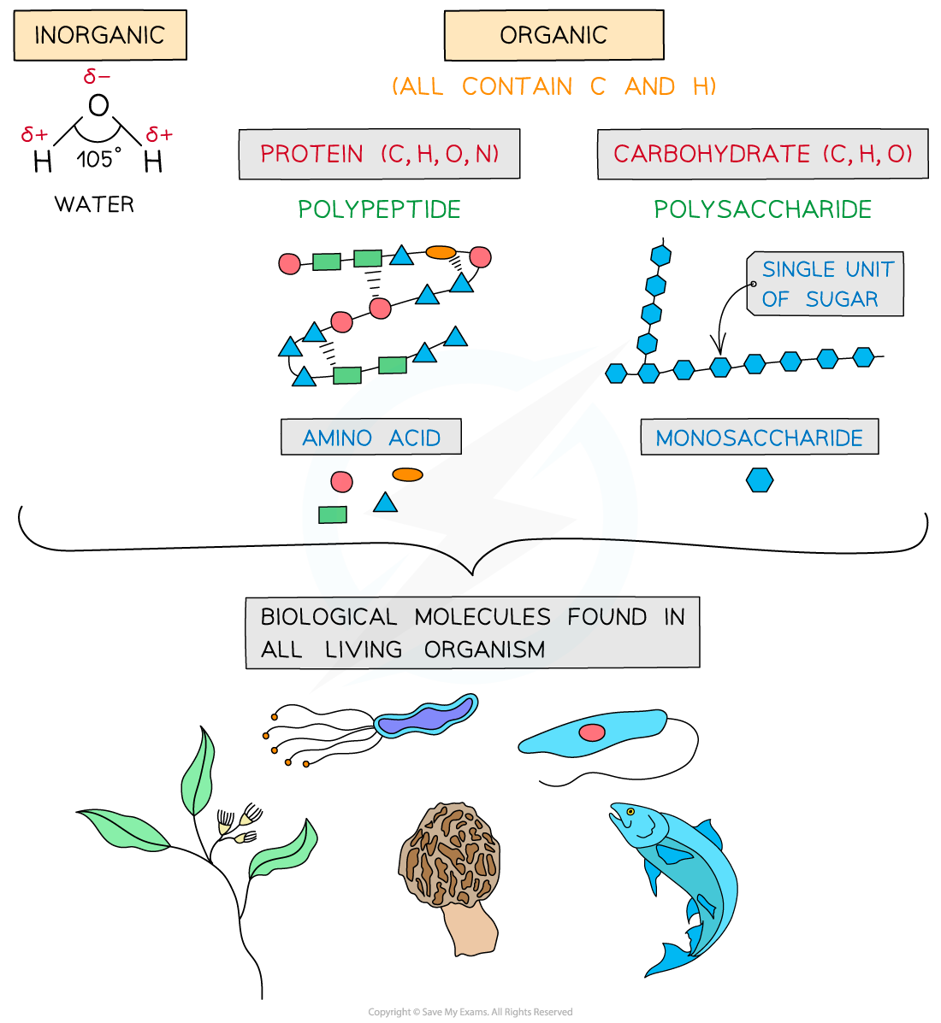- 翰林提供学术活动、国际课程、科研项目一站式留学背景提升服务!
- 400 888 0080
AQA A Level Biology复习笔记1.1.1 Biological Molecules: Key Terms
Biological Molecules: Key Terms
- There is much variety of life within and between organisms but the biochemical basis of life is similar for all living things
- The key molecules that are required to build structures that enable organisms to function are:
- Carbohydrates
- Proteins
- Lipids
- Nucleic Acids
- Water
- Monomers are the smaller units from which larger molecules are made
- Polymers are molecules made from a large number of monomers joined together in a chain


The key biological molecules for living organisms
- Carbohydrates, proteins, lipids and nucleic acids contain the elements carbon (C) and hydrogen (H) making them organic compounds
- Carbon atoms are key to the organic compounds because:
- Each carbon atom can form four covalent bonds – this makes the compounds very stable (as covalent bonds are so strong they require a large input of energy to break them)
- Carbon atoms can form covalent bonds with oxygen, nitrogen and sulfur
- Carbon atoms can bond to form straight chains, branched chains or rings
- Carbon compounds can form small single subunits (monomers) that bond with many repeating subunits to form large molecules (polymers) by a process called polymerisation
- Macromolecules are very large molecules
- That contain 1000 or more atoms therefore having a high molecular mass
- Polymers can be macromolecules, however not all macromolecules are polymers as the subunits of polymers have to be the same repeating units
Carbohydrates
- Carbohydrates are one of the main carbon-based compounds in living organisms
- All molecules in this group contain C, H and O
- As H and O atoms are always present in the ratio of 2:1 (eg. water H2O, which is where ‘hydrate’ comes from) they can be represented by the formula Cx (H2O)y
- The three types of carbohydrates are monosaccharides, disaccharides and polysaccharides
Types of Carbohydrates Table

转载自savemyexams

早鸟钜惠!翰林2025暑期班课上线

最新发布
© 2025. All Rights Reserved. 沪ICP备2023009024号-1








